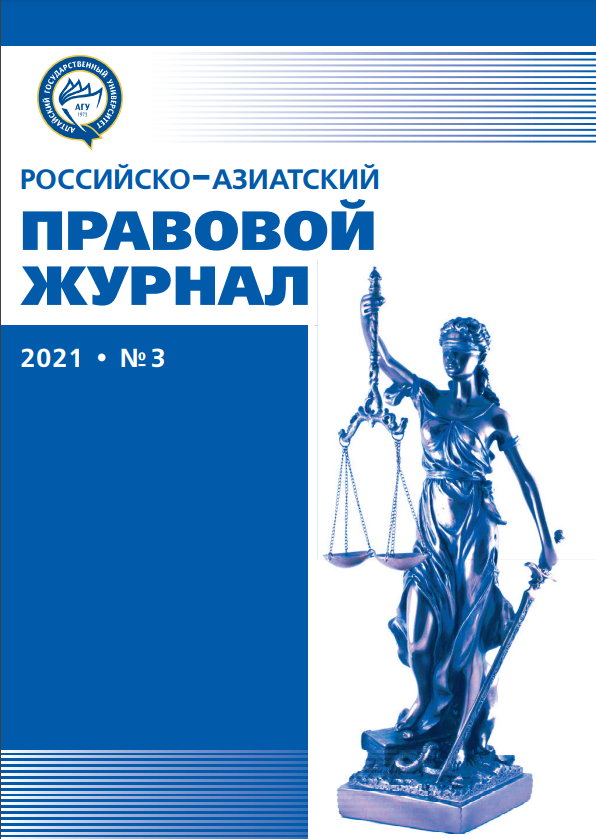STATE OF THE KYRGYZ IN THE EARLY MIDDLE AGES
ДК 321:94 (575.2) ББК 66.033.1+63.3(5Кир)-4
Abstract
The article deals with the evolution of the political and legal system of the Kyrgyz society during theEarly Middle Ages. In the 6th century, the Khagyas (Kyrgyz) State was formed on the Yenisei River on thebasis of the unification of the Altai and Yenisei Kyrgyz tribes. The IX-beginning of the X century — the periodof the greatest growth of the power of the Kyrgyz power was called the “Kyrgyz Great Power”.
Downloads
References
Материалы по истории кыргызов и Кыргызстана. Бишкек, 2003. Т. 2. С. 34.
Борубашов Б.И. История государства и права Кыргызской Республики. Бишкек, 2015. Т. 1. С. 70.
Бартольд В.В. Избранные произведения по истории кыргызов и Кыргызстана. Бишкек ; Шам, 1996. С. 209.
Russian-Asian Law Journal is a golden publisher, as we allow self-archiving, but most importantly we are fully transparent about your rights.
Authors may present and discuss their findings ahead of publication: at scientific conferences, on preprint servers, in public databases, and in blogs, wikis, tweets, and other informal communication channels.
Russian-Asian Law Journal allows authors to deposit manuscripts (currently under review or those for intended submission) in non-commercial, pre-print servers such as ArXiv.
Authors who publish with this journal agree to the following terms:
- Authors retain copyright and grant the journal right of first publication with the work simultaneously licensed under a Creative Commons Attribution License that allows others to share the work with an acknowledgement of the work's authorship and initial publication in this journal.
- Authors are able to enter into separate, additional contractual arrangements for the non-exclusive distribution of the journal's published version of the work (e.g., post it to an institutional repository or publish it in a book), with an acknowledgement of its initial publication in this journal.
- Authors are permitted and encouraged to post their work online (e.g., in institutional repositories or on their website) prior to and during the submission process, as it can lead to productive exchanges, as well as earlier and greater citation of published work (See The Effect of Open Access).








